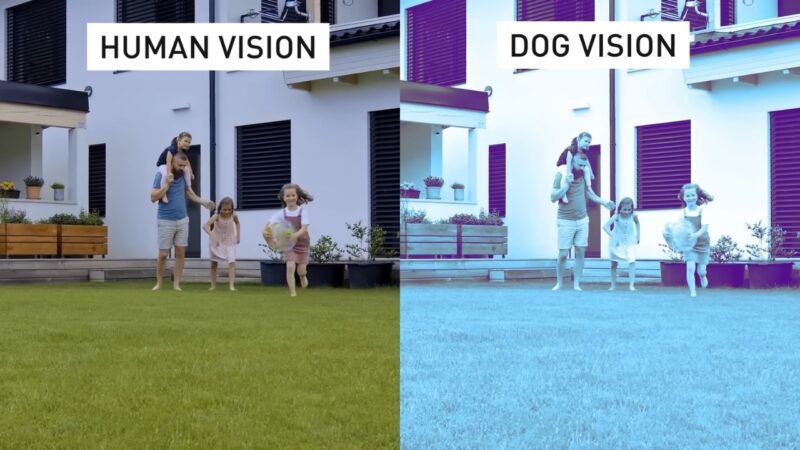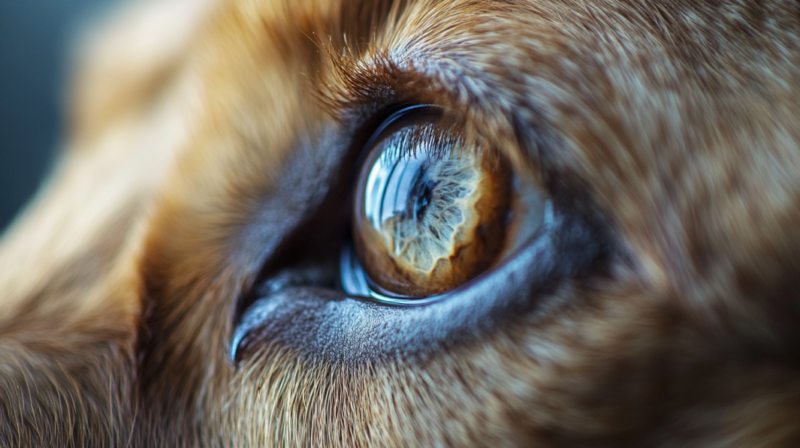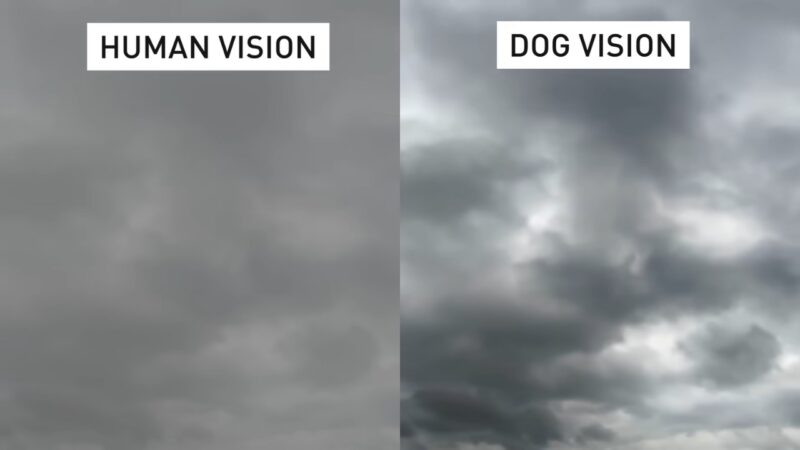
-
Srdjan Ilic
- Published:
- Updated: September 16, 2024
- Category: Dog Specific Care
Share Post:
Many people wonder, “Are dogs really colorblind?” Contrary to popular belief, dogs are not completely colorblind.
Dogs can see colors, but their color spectrum is limited compared to humans.
They primarily perceive shades of blue and yellow, while reds and greens appear as shades of gray or brown to them.
Scientists have discovered that dogs see the world through a form of dichromatic vision.
This means their eyes contain two types of color receptors, unlike humans who have three.
This unique vision allows dogs to differentiate certain colors but not others, which can influence how they interact with their environment.
Myth Versus Reality: Color Perception in Dogs
The common myth that dogs only see in black and white is inaccurate.
Dogs possess dichromatic vision, which means they have two types of color receptors (cones) in their eyes, compared to the three types in human eyes. This gives their color perception a different spectrum, but not a monochromatic one.
According to the American Kennel Club, dogs can distinguish some colors, although their world looks different from ours.
The Spectrum of Colors Dogs Can See
Dogs primarily perceive the world in shades of blue and yellow.
They lack the red-green color receptors that humans have, making their vision akin to red-green color blindness in humans. This means they struggle to distinguish between red and green hues.
The CanadaVet notes that while their color range is limited, dogs excel at detecting movement and contrasts in light, which is more crucial for their survival and tasks. Using colored toys and treats in blue or yellow can leverage their color vision capabilities effectively.
Comparisons to Human Vision

This allows people to see a full range of colors. Dogs, on the other hand, have only two types of cones.
They primarily perceive shades of blue and yellow.
For dogs, the world is somewhat similar to how a person with red-green color blindness would see it.
They cannot distinguish between reds and greens.
This difference means that certain colors and shades appear less vibrant to dogs compared to humans.
Progressive retinal atrophy, a common condition in dogs, can further deteriorate their vision, eventually leading to blindness.
Human Vision
- Three cones: Red, Green, Blue
- Full-color spectrum
Canine Vision
- Two cones: Blue, Yellow
- Limited color spectrum
Functional Implications of Differences

These variations in vision affect how dogs interact with their environment. Dogs excel at detecting movement and changes in light due to their enhanced perception in low-light conditions. This makes them effective hunters and guardians during dawn and dusk.
Humans rely on their advanced color perception for tasks requiring nuanced color differentiation, such as reading and recognizing diverse objects. Dogs depend more on their acute sense of smell and hearing than their limited color vision for interpreting their surroundings.
Implications for Dogs
- Low-light vision: Enhanced
- Movement detection: Superior
Implications for Humans
- Color differentiation: Advanced
- Visual tasks: Diverse
Scientific Studies on Canine Color Vision

Behavioral tests often involve training dogs to distinguish between colored and grayscale images. Another common method is the use of visual-evoked potential (VEP) studies, which measure the brain’s response to visual stimuli.
Veterinary researchers also rely on electrophysiological recordings to assess the activity of cone cells in a dog’s retina. These studies have shown dogs possess two types of cone cells, sensitive to short (blue) and long (red/green) wavelengths. Advanced imaging techniques, such as immunohistochemistry, further assist in visualizing these cone cells.
Findings from various studies suggest dogs see colors, but not as vividly as humans. Dogs’ dichromatic vision allows them to distinguish between shades of blue and yellow but makes it difficult to recognize red and green. This trait is similar to red-green color blindness in humans.
For example, a study from the National Center for Biotechnology Information (NCBI) indicated dogs have cone pigments with spectral sensitivity peaks at approximately 429 nm (blue) and 555 nm (yellow-green). This means dogs likely perceive the world in shades of blue and yellow, with red and green appearing as grayscale.










